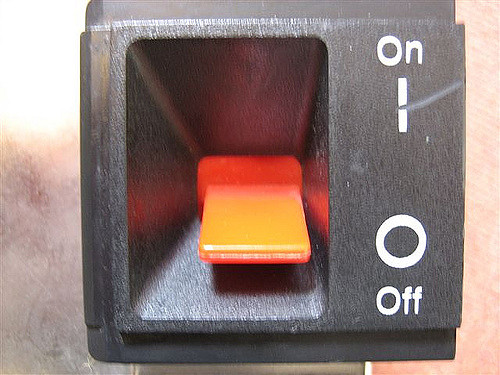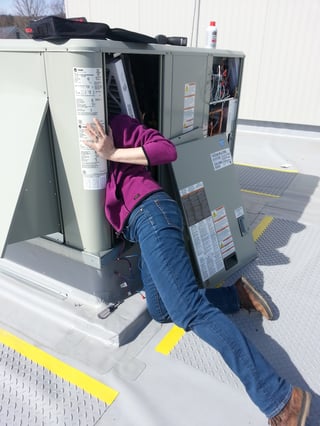June 2022 update: Given the current supply chain and labor shortages the construction industry is facing in 2022, looking after your building's existing systems becomes even more important. With equipment delivery for major systems sometimes many months away, retrocommissioning your existing systems can help tune them up to keep them in tip-top shape to get more usable -- and efficient -- life out of them.
When people ask me what I do for work, I generally tell them I’m a building systems engineer, with a big focus on making facilities more energy efficient and comfortable for occupants. One common part of my job entails going to a building to perform an energy audit or assessment. During these visits, we follow the same straightforward outline:
- Walk through the site
- Inventory all energy-related equipment including lighting, mechanical systems, building envelope, etc.
- Speak with the building operator about how they run the building
- Ask the building owner, occupants, and operator about and any issues or concerns they have regarding maintenance, equipment that is not working properly, or comfort problems.
24/7 Operation - Low Hanging Fruit?

At this point in the conversation, people will sometimes ask what our most frequent recommendations are and where the biggest potential for energy savings is usually found. Folks are often surprised to learn that one of the most common opportunities we identify is equipment running continuously 24/7, even in buildings such as offices or schools where the actual occupied hours are far lower. Depending on the size of the uncontrolled equipment, reducing the operating hours to more closely match actual occupancy patterns can lead to a significant reduction in energy use with very little cost to the owner. Turning off equipment when it’s not needed may not have the same visible cachet as installing solar panels, but can be a very cost effective way to achieve more efficient operation.
Not Always So Easy
 Image by Flickr user Steve Lee
Image by Flickr user Steve Lee
Why are mismatched operating to occupancy schedules such a common finding? Isn’t it obvious that equipment should be turned off (or at least turned down) when it’s not needed? On one level, operating a building in “24/7 mode” is completely understandable. After all, the main priority of facilities staff is to keep the building running effectively and to keep building occupants happy and comfortable. They often need to accomplish this using limited time and resources, and are not always able to think about energy impacts. Sometimes the easiest way to meet these objectives is to leave everything running overnight, so that they don’t have to worry about whether the building will be warm (or cool) enough when people start coming in the next morning. Or perhaps the facilities staff will implement a quick fix to address an occupant complaint in lieu of diagnosing the root cause of a problem. If you want to follow this post's title's analogy, it's like using a Band-Aid to fix a broken arm just because there is a cut near where the bone is fractured. Most of the time these quick fixes bypass the automatic control of the systems in the building. Over time, a building’s efficiency can suffer death by a thousand cuts as these quick fixes build up and the underlying problems go unresolved.
Conservative, Gradual Fixes

Image by Flickr user b k
Issues like an incorrect occupancy schedule are easy to identify, and the remedies typically don’t require investing in expensive capital improvements or even implementing new and complex control sequences. However, it is not always so simple to get the necessary changes implemented. Building operators tend to be conservative and are reluctant to make any operational changes if things have been working fine the way they are (that is to say, they’re not receiving occupant complaints and are free to work on their scheduled regular maintenance). Before making any recommendations, it is necessary to listen closely to the facility manager’s concerns and take the time to address any questions that come up. Sometimes a gradual approach can work. For example, if the air handling units are currently operating 24/7 with no setback for space temperature setpoints, one recommendation could be to add a setback of just 2°F or so for unoccupied periods. If after a couple of weeks things seem to be working fine, the setback can be increased and the process repeated until a good balance is found.
Staff Commitment Required

It is important to note that any change that is made requires the complete buy-in and understanding of all the facilities staff. Otherwise, after the first comfort complaint (even if the reason has nothing to do with the changes that were made) things may revert back to how they were operating previously. Training maintenance staff to not just put on a Band-Aid, but to find out what caused the issue in the first place and treating the problem at the source is essential in achieving long-term and consistent energy savings. Building operators understand the buildings in which they work better than anyone else ever will, and they are a vital boots-on-the-ground resource for any successful energy management initiative.
This article originally published May 2017 and updated 6/24/2022.


